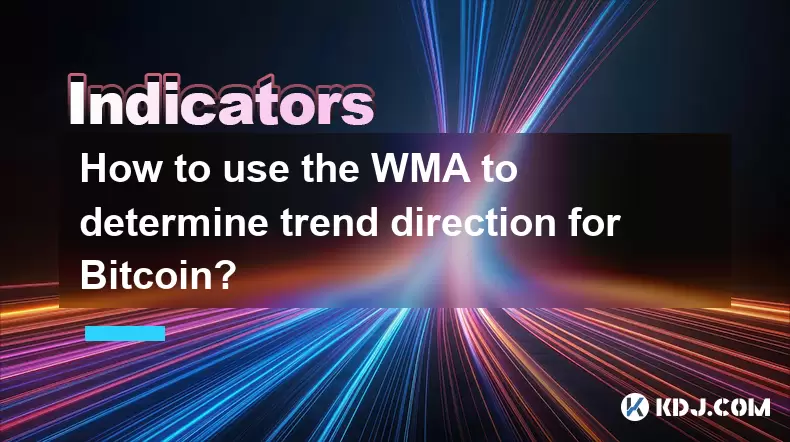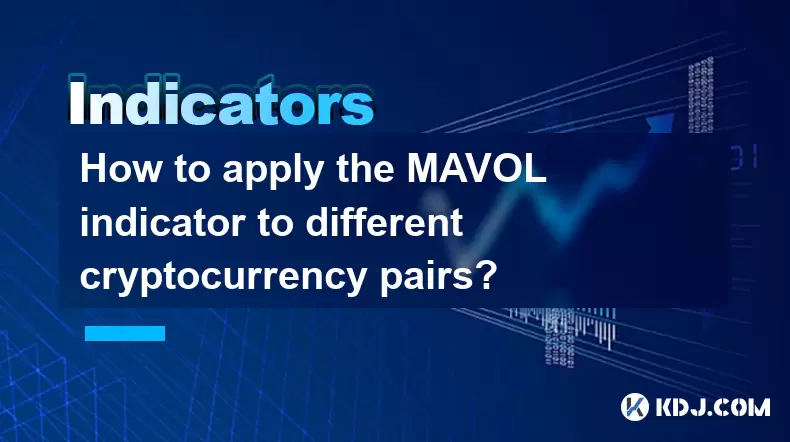-
 Bitcoin
Bitcoin $118400
0.47% -
 Ethereum
Ethereum $3836
2.20% -
 XRP
XRP $3.157
2.98% -
 Tether USDt
Tether USDt $0.9999
-0.03% -
 BNB
BNB $801.5
1.31% -
 Solana
Solana $180.9
2.07% -
 USDC
USDC $0.9999
-0.02% -
 Dogecoin
Dogecoin $0.2225
2.50% -
 TRON
TRON $0.3285
-1.02% -
 Cardano
Cardano $0.7789
2.60% -
 Hyperliquid
Hyperliquid $43.60
2.39% -
 Sui
Sui $3.892
4.41% -
 Stellar
Stellar $0.4229
3.34% -
 Chainlink
Chainlink $18.01
3.98% -
 Hedera
Hedera $0.2745
6.77% -
 Bitcoin Cash
Bitcoin Cash $582.3
3.38% -
 Avalanche
Avalanche $23.77
1.04% -
 Ethena USDe
Ethena USDe $1.001
0.01% -
 Toncoin
Toncoin $3.493
3.59% -
 Litecoin
Litecoin $110.0
2.48% -
 UNUS SED LEO
UNUS SED LEO $8.936
-0.37% -
 Shiba Inu
Shiba Inu $0.00001304
2.49% -
 Uniswap
Uniswap $9.999
1.09% -
 Polkadot
Polkadot $3.897
3.26% -
 Monero
Monero $308.6
-0.83% -
 Dai
Dai $0.9999
-0.01% -
 Bitget Token
Bitget Token $4.504
-0.04% -
 Pepe
Pepe $0.00001154
2.95% -
 Cronos
Cronos $0.1471
3.06% -
 Ethena
Ethena $0.6691
19.53%
How to use the WMA to determine trend direction for Bitcoin?
The Weighted Moving Average (WMA) emphasizes recent prices, making it more responsive than SMA for spotting Bitcoin trend shifts.
Jul 31, 2025 at 07:21 am

Understanding the Weighted Moving Average (WMA)
The Weighted Moving Average (WMA) is a technical indicator used in cryptocurrency trading to identify trend direction by assigning greater importance to recent price data. Unlike the Simple Moving Average (SMA), which treats all data points equally, the WMA emphasizes recent closing prices, making it more responsive to new market information. This responsiveness is especially valuable when analyzing volatile assets like Bitcoin, where price shifts can occur rapidly. The formula for WMA involves multiplying each closing price by a weighting factor, with the most recent price receiving the highest weight. The sum of these weighted values is then divided by the sum of the weights.
For example, in a 5-period WMA:
- The most recent closing price is multiplied by 5
- The previous day’s by 4
- Then 3, 2, and 1 respectively
- The total is divided by the sum of the weights (5+4+3+2+1 = 15)
This calculation ensures that the WMA line reacts faster to price changes compared to SMA, providing traders with earlier signals about potential trend shifts.
Setting Up WMA on a Bitcoin Chart
To use WMA effectively, traders must first configure it on their trading platform. Most platforms like TradingView, Binance, or MetaTrader offer built-in WMA tools. The process typically involves the following steps:
- Open the chart for Bitcoin/USDT or BTC/USD
- Click on the “Indicators” button located at the top of the chart interface
- Search for “Weighted Moving Average” in the indicator library
- Select the WMA and adjust the period setting (common choices are 9, 14, or 20)
- Confirm the settings and apply the indicator to the chart
After application, a smooth line will appear overlaying the candlesticks. This line reflects the weighted average of Bitcoin’s closing prices over the selected period. Traders often use multiple WMAs with different periods (e.g., 9 and 21) to compare short-term and long-term trends. Adjusting the color and thickness of the WMA line can improve visibility, especially on cluttered charts.
Interpreting WMA for Trend Direction
The position and slope of the WMA line provide critical insights into Bitcoin’s trend direction. When the WMA line is sloping upward, it indicates a bullish trend, suggesting that recent buying pressure is strong. Conversely, a downward-sloping WMA signals bearish momentum, reflecting increased selling activity. Traders should pay close attention to the relationship between Bitcoin’s current price and the WMA line:
- If the price is above the WMA, the trend is considered upward
- If the price is below the WMA, the trend is considered downward
Crossovers between price and WMA can serve as potential entry or exit signals. For instance, when Bitcoin’s price moves from below to above the 20-period WMA, it may indicate the start of a new uptrend. Similarly, a drop below the WMA could suggest weakening momentum and a possible reversal. These signals are more reliable when confirmed by volume spikes or other technical indicators.
Using WMA Crossovers for Confirmation
A powerful method for determining trend direction involves using dual WMA crossovers. This strategy employs two WMA lines: a shorter-period (e.g., 9) and a longer-period (e.g., 21). The interaction between these lines helps filter out noise and confirms trend changes:
- When the shorter WMA crosses above the longer WMA, it generates a bullish signal
- When the shorter WMA crosses below the longer WMA, it generates a bearish signal
These crossovers are known as “golden cross” and “death cross” when applied to longer-term moving averages, but the same principle applies with WMA. To execute this strategy:
- Apply both the 9-period and 21-period WMA to the Bitcoin chart
- Observe the convergence and divergence of the two lines
- Wait for a clear crossover accompanied by rising volume
- Enter a long position after a bullish crossover or a short position after a bearish crossover
It is crucial to avoid acting on false signals by ensuring the crossover occurs after a period of consolidation or clear directional movement. Using this method on higher timeframes (e.g., 4-hour or daily charts) increases the reliability of the signals.
Combining WMA with Other Indicators
While WMA is effective on its own, combining it with complementary tools enhances accuracy. The Relative Strength Index (RSI) helps identify overbought or oversold conditions, which can confirm whether a trend is sustainable. For example, if Bitcoin is above the WMA and the RSI is above 70, the uptrend may be overextended, suggesting a pullback could occur. Conversely, a WMA-supported downtrend with RSI below 30 might indicate oversold conditions and a potential bounce.
Another useful companion is the Volume Weighted Average Price (VWAP), particularly on intraday charts. When Bitcoin trades above both WMA and VWAP with strong volume, it reinforces bullish sentiment. Traders also use support and resistance levels alongside WMA to validate breakouts. A breakout above resistance coinciding with a bullish WMA crossover increases the probability of a sustained upward move.
Common Mistakes When Using WMA
Traders often misinterpret WMA signals due to common errors. One major mistake is relying solely on WMA without confirmation from price action or volume. For example, a brief crossover on a 5-minute chart during low liquidity may not reflect a true trend change. Another issue is using too short a period, which increases sensitivity and leads to whipsaws—frequent false signals in sideways markets.
Ignoring the market context is another pitfall. During major news events or macroeconomic announcements, Bitcoin can exhibit erratic behavior that distorts WMA readings. Traders should also avoid constantly switching WMA periods in search of better results, as this leads to over-optimization and poor real-time performance. Consistency in settings and disciplined execution are key to effective WMA usage.
Frequently Asked Questions
What is the best WMA period for Bitcoin trading?
The ideal WMA period depends on the trading timeframe. For day trading, a 9 or 14-period WMA offers timely signals. For swing trading, a 21 or 50-period WMA provides more reliable trend identification. Traders should test different periods on historical Bitcoin data to find what aligns with their strategy.
Can WMA be used on all Bitcoin timeframes?
Yes, WMA can be applied to all chart intervals, from 1-minute to monthly. However, signals on lower timeframes (e.g., 1-minute or 5-minute) are noisier and require additional filtering. Higher timeframes like daily or weekly yield stronger, more dependable trends.
How does WMA differ from EMA in Bitcoin analysis?
Both WMA and Exponential Moving Average (EMA) prioritize recent prices, but EMA applies a smoothing factor that gives slightly different weight distribution. WMA uses a linear weighting system, making it more straightforward. EMA reacts faster than WMA, but WMA avoids the complexity of decay factors.
Should I use WMA alone or with candlestick patterns?
Using WMA in conjunction with candlestick patterns improves decision-making. For example, a bullish engulfing pattern forming near a rising WMA strengthens a buy signal. Relying only on WMA may miss key reversal or continuation cues visible in price action.
Disclaimer:info@kdj.com
The information provided is not trading advice. kdj.com does not assume any responsibility for any investments made based on the information provided in this article. Cryptocurrencies are highly volatile and it is highly recommended that you invest with caution after thorough research!
If you believe that the content used on this website infringes your copyright, please contact us immediately (info@kdj.com) and we will delete it promptly.
- SEC, Crypto, and On-Chain: Navigating the Regulatory Maze
- 2025-08-01 02:31:40
- Bitcoin Bullish Market: How Long Positions are Boosting the Crypto King
- 2025-08-01 02:35:33
- Visa, Stellar, and Stablecoins: A New York Minute on the Future of Finance
- 2025-08-01 01:50:50
- BCH, FET, BlockDAG: Decoding the Crypto Buzz
- 2025-08-01 01:16:37
- Conflux Token, Crypto Simplicity, and WeWake Finance: A New Era?
- 2025-08-01 01:50:50
- Dogecoin, Remittix, and Analyst Targets: Navigating the Crypto Landscape
- 2025-08-01 01:55:40
Related knowledge

What does it signify when the MACD crosses below the zero line?
Aug 01,2025 at 01:43am
Understanding the MACD IndicatorThe Moving Average Convergence Divergence (MACD) is one of the most widely used technical analysis tools in the crypto...

How does the MACD histogram show momentum?
Aug 01,2025 at 01:16am
Understanding the MACD Histogram and Its Role in Cryptocurrency TradingThe MACD histogram is a visual representation of the difference between the MAC...

What is a MACD crossover?
Jul 31,2025 at 11:52pm
Understanding the Role of Private Keys in Cryptocurrency SecurityIn the world of cryptocurrency, private keys are the cornerstone of ownership and con...

How can you use the MACD histogram to determine trend strength?
Jul 31,2025 at 11:10pm
Understanding the MACD Histogram and Its ComponentsThe MACD (Moving Average Convergence Divergence) histogram is a visual representation of the differ...

What is the impact of different moving average types (SMA vs. EMA) on the MAVOL indicator?
Aug 01,2025 at 02:31am
Understanding the MAVOL Indicator in Cryptocurrency AnalysisThe MAVOL (Moving Average Volume) indicator is a technical analysis tool used in the crypt...

How to apply the MAVOL indicator to different cryptocurrency pairs?
Aug 01,2025 at 12:43am
Understanding the MAVOL Indicator in Cryptocurrency TradingThe MAVOL indicator, short for Moving Average Volume, is a technical analysis tool that app...

What does it signify when the MACD crosses below the zero line?
Aug 01,2025 at 01:43am
Understanding the MACD IndicatorThe Moving Average Convergence Divergence (MACD) is one of the most widely used technical analysis tools in the crypto...

How does the MACD histogram show momentum?
Aug 01,2025 at 01:16am
Understanding the MACD Histogram and Its Role in Cryptocurrency TradingThe MACD histogram is a visual representation of the difference between the MAC...

What is a MACD crossover?
Jul 31,2025 at 11:52pm
Understanding the Role of Private Keys in Cryptocurrency SecurityIn the world of cryptocurrency, private keys are the cornerstone of ownership and con...

How can you use the MACD histogram to determine trend strength?
Jul 31,2025 at 11:10pm
Understanding the MACD Histogram and Its ComponentsThe MACD (Moving Average Convergence Divergence) histogram is a visual representation of the differ...

What is the impact of different moving average types (SMA vs. EMA) on the MAVOL indicator?
Aug 01,2025 at 02:31am
Understanding the MAVOL Indicator in Cryptocurrency AnalysisThe MAVOL (Moving Average Volume) indicator is a technical analysis tool used in the crypt...

How to apply the MAVOL indicator to different cryptocurrency pairs?
Aug 01,2025 at 12:43am
Understanding the MAVOL Indicator in Cryptocurrency TradingThe MAVOL indicator, short for Moving Average Volume, is a technical analysis tool that app...
See all articles

























































































